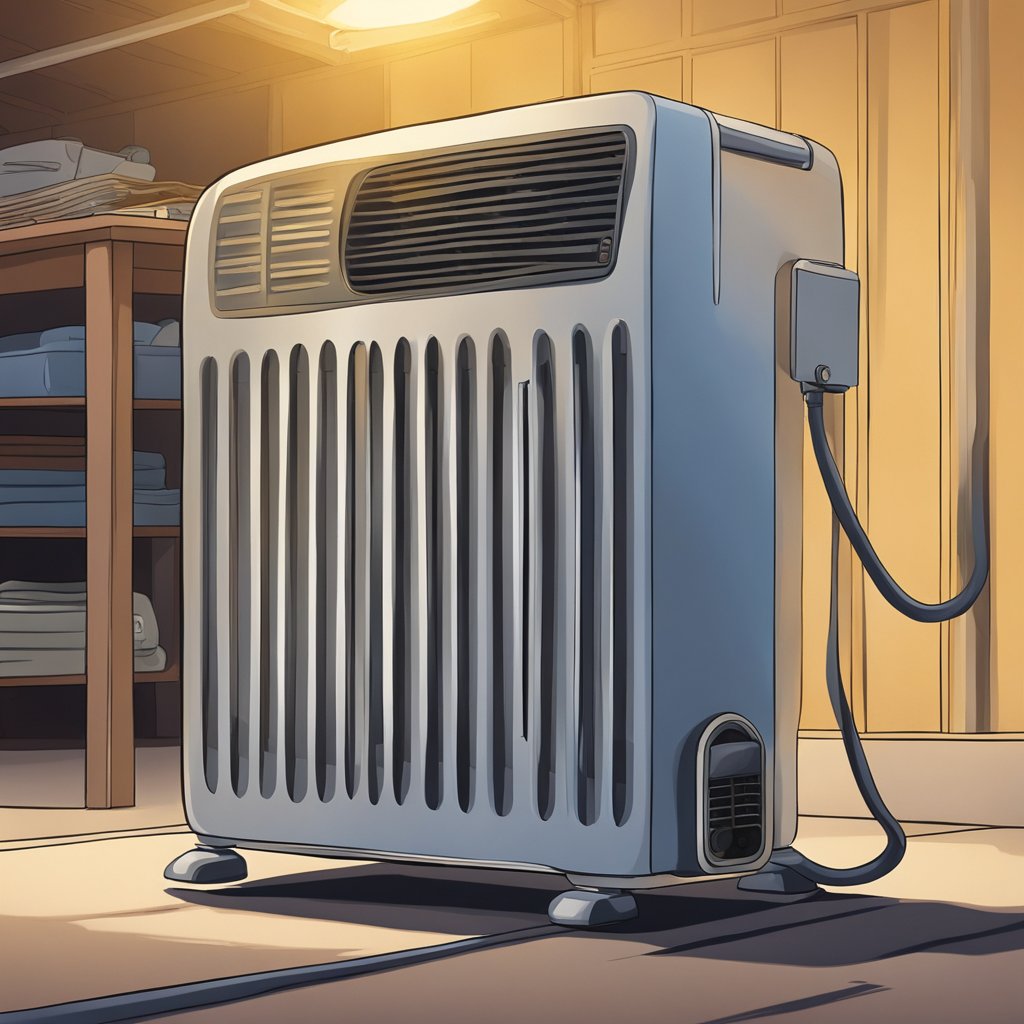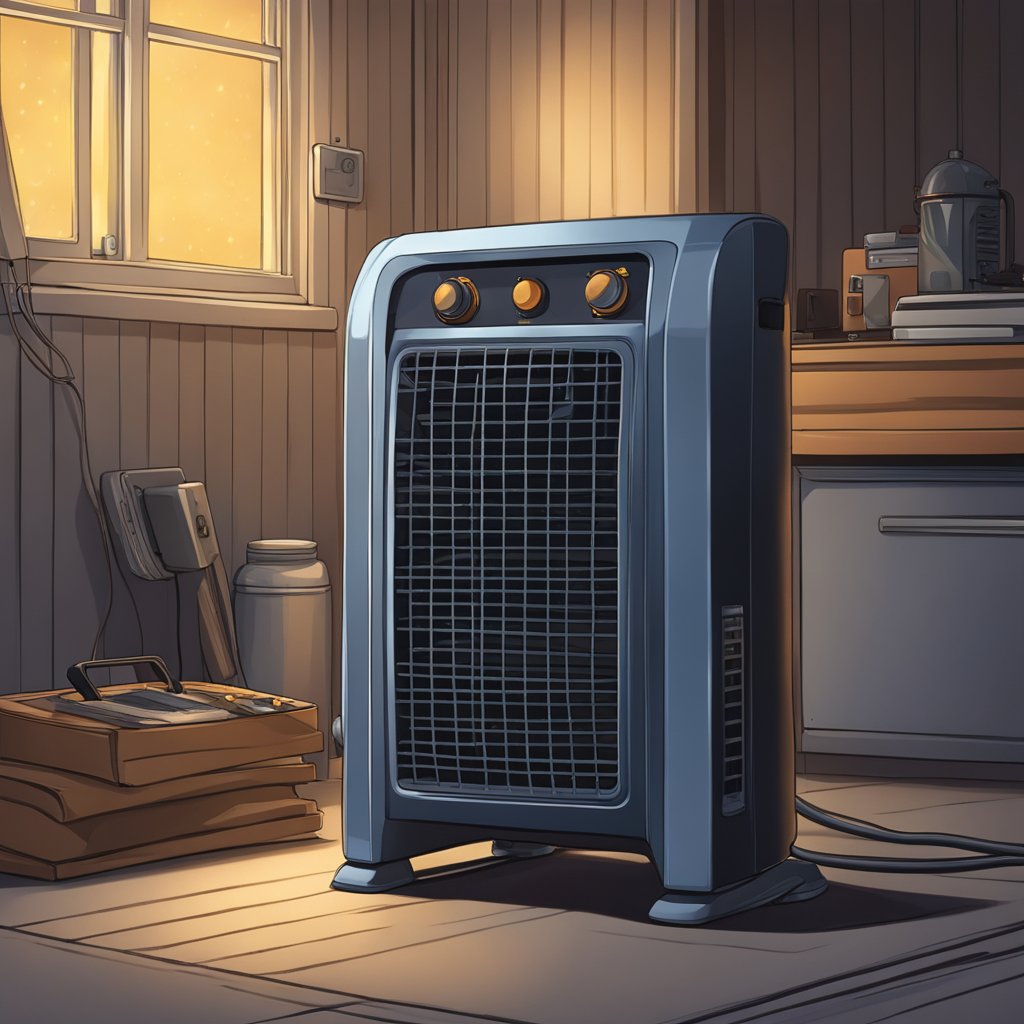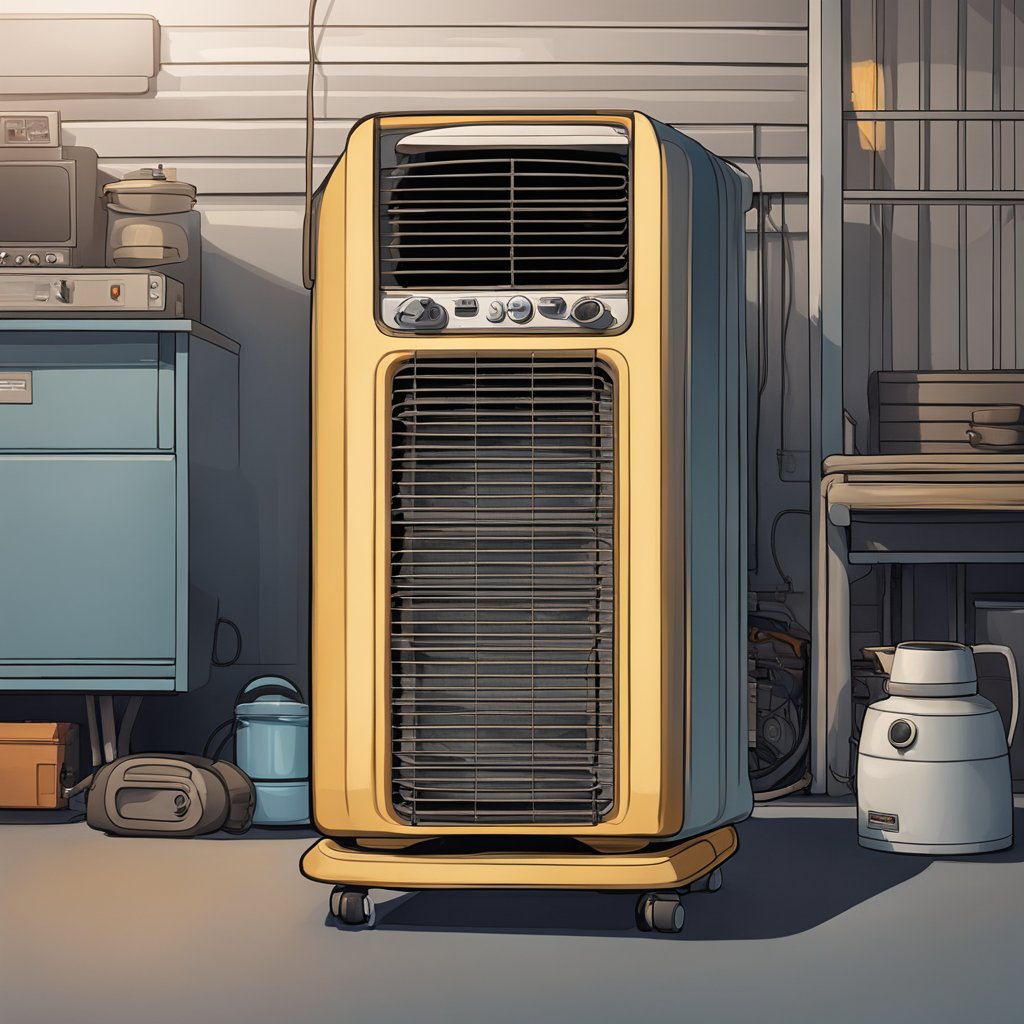Will a Space Heater Heat a Garage? Practicality, Efficiency, and What To Expect!
Garages are versatile spaces in many homes, often doubling as workshops, hobby areas, or additional living spaces. However, as temperatures drop, heating these spaces becomes a necessity for continued use.
A 1,500 watt space heater should be able to adequately heat a small, insulated garage in cold temperatures above freezing. Most space heaters will not be able to properly heat a space if the garage is poorly insulated or the temperatures outside are extremely cold. Electric space heaters typically work best for heating a garage, but propane heaters will work well with adequate ventilation.
This blog post is a culmination of my experience and knowledge, aimed at helping homeowners navigate the complexities of selecting the right space heater for their garages. My goal is to provide readers with reliable, expert advice that is grounded in years of industry experience and a deep understanding of heating technologies.
Will a Space Heater Heat a Garage Effectively?
The effectiveness of space heaters in garages largely depends on the heater’s power and the garage’s size and insulation.
For instance, a standard electric space heater, which typically provides between 1,000 to 1,500 watts, should heat a small, well-insulated garage. However, in a larger or poorly insulated space, these heaters may not be powerful enough to raise the temperature effectively, especially during extreme cold.
To effectively heat your garage, you need to calculate the required heating power. Start by measuring the garage’s square footage. Then, factor in the insulation quality; poorly insulated spaces may need more heating power.
A general rule is to aim for 20 BTUs per square foot for well-insulated spaces. For example, a 500-square-foot garage would need about 10,000 BTUs. For a poorly insulated garage, you may need 30-40 BTUs per square foot.
Consider using an online BTU calculator for a more accurate estimation or consult a heating expert for tailored advice.
Wattage and BTUs Explained:
- Wattage: This is a measure of electrical power. In the context of space heaters, it indicates the energy consumption and heat output capability of the heater. Most residential space heaters range from 1,000 to 1,500 watts.
- BTUs: BTU is a unit of heat and stands for British Thermal Unit. It’s a traditional unit of heat defined as the amount of heat required to raise the temperature of one pound of water by one degree Fahrenheit. BTUs are a common measure for the heating capacity of various heating systems, including space heaters.

How to calculate the recommended BTUs to heat a garage
- Measure Your Garage: Calculate the square footage of your garage. This is done by multiplying the length by the width.
- Determine the Insulation Quality: If your garage is well-insulated, it will require fewer BTUs per square foot. For a well-insulated space, estimate around 20 BTUs per square foot. For a poorly insulated garage, you may need 30-40 BTUs per square foot.
- Calculate the BTUs: Multiply the square footage of your garage by the estimated BTUs per square foot. For example, a 500-square-foot well-insulated garage would need approximately 10,000 BTUs (500 sq ft x 20 BTUs/sq ft).
- Convert BTUs to Watts: To convert BTUs to watts, divide the BTUs by 3.41 (1 watt = 3.41 BTUs). Using the previous example, 10,000 BTUs would be approximately 2,933 watts (10,000 ÷ 3.41).
Practical Application:
Choosing the Right Heater: With the calculated wattage, you can choose a heater that matches your needs. For the 500-square-foot garage needing about 2,933 watts, a space heater with a capacity of 3,000 watts would be appropriate.
Multiple Heaters: In cases where the required wattage exceeds the capacity of a single heater, using multiple heaters strategically placed can be an effective solution.
Key Points:
- For Small Spaces: Standard electric heaters are suitable for compact, well-insulated garages.
- Power Range: Most household space heaters range from 1,000 to 1,500 watts.
- Limitations: Less effective in larger or poorly insulated spaces, particularly in severe cold.
What Type of Space Heater Should You Use To Heat a Garage?
Selecting the right type of space heater is crucial for effectively heating your garage. Let’s explore the most common types of space heaters—electric, propane, and infrared—and their suitability for different garage settings.
Electric Space Heaters
Electric space heaters are a popular choice due to their convenience and safety features. They’re ideal for smaller garages or those with good insulation.
- Convection Heaters: These heaters warm the air in the room. They are ideal for smaller, well-insulated garages. Examples include oil-filled radiators and ceramic heaters.
- Radiant Heaters: These provide direct heat to objects and people in their line of sight. They’re efficient for spot heating or as a supplemental heat source in larger garages.
- Fan-Forced Heaters: These heaters use a fan to blow air over a heating element. They are effective for quickly heating small to medium-sized garages but can be noisy.
Pros: Safe, no emissions, easy to use, and varied types for different needs.
Cons: May struggle in larger or poorly insulated spaces, can increase electricity bills.
Electric heaters come in various forms, including convection heaters, which warm the air, and radiant heaters, which directly heat objects and people. However, their effectiveness diminishes in larger spaces or garages with poor insulation, as they may not provide enough power to heat the entire area adequately.
Choosing Electric Heaters:
- Best for Small Spaces: Effective in heating smaller, well-insulated garages.
- Variety: Choose from convection (air heating) or radiant (direct heating) models.
- Limitation: Less effective in larger, poorly insulated garages.

Propane Space Heaters
Propane heaters are more powerful and can heat larger spaces more effectively than their electric counterparts.
- Forced Air Propane Heaters: These are powerful and can quickly heat large spaces, making them suitable for bigger garages or workshops.
- Catalytic Propane Heaters: They provide steady, radiant heat and are more energy-efficient. Suitable for medium-sized garages.
Pros: Powerful, effective in large and poorly insulated areas, independent of electricity.
Cons: Requires good ventilation to prevent carbon monoxide build-up, need for refilling propane tanks.
They are an excellent choice for garages with poor insulation or for those who need quick heating. However, safety is a significant concern with propane heaters. They must be used in well-ventilated areas to prevent the build-up of harmful gases, and proper storage of propane tanks is essential.
Using Propane Heaters:
- Powerful Heating: Suitable for larger, less insulated garages.
- Quick Heating: Efficient in rapidly increasing the temperature.
- Safety Precautions: Require good ventilation and careful handling of propane tanks.

Infrared Heaters
Infrared heaters are efficient and provide targeted heating, making them suitable for garages used for specific activities or workspaces.
Infrared or Radiant Heaters: These heaters emit infrared radiation that heats objects directly, making them efficient for spot heating or focused areas.
Pros: Energy-efficient, provide instant warmth, do not circulate dust.
Cons: Heat is directional (limited to the line of sight), may not evenly heat the entire space.
They work by emitting infrared radiation that directly warms objects and people, rather than heating the air. This makes them a good choice for spot heating in larger garages or as a supplementary heat source.
However, they might not be the best option for heating the entire garage space evenly.
Benefits of Infrared Heaters:
- Targeted Heating: Ideal for heating specific areas or workstations.
- Energy Efficient: Consumes less energy compared to other types.
- Consideration: May not evenly heat the entire garage space.

What Else To Consider When Using a Space Heater to Heat a Garage
Beyond choosing the right type of heater, there are practical considerations to ensure effective and safe heating in your garage. These include safety guidelines, cost-effectiveness, and installation tips.
Safety
Safety should always be a top priority when using space heaters. Regardless of the type, it’s crucial to follow specific safety guidelines to prevent fire hazards or carbon monoxide poisoning.
Always keep the heater away from flammable materials, ensure proper ventilation, especially with propane heaters, and never leave a heater unattended. Regularly inspect your heater for any signs of damage or wear and follow the manufacturer’s instructions for use and maintenance.
Safety Tips:
- Keep Clear: Maintain a safe distance from flammable materials.
- Ventilation: Essential for propane heaters to avoid gas build-up.
- Regular Inspection: Check for damage and ensure proper functioning.

Cost-Effectiveness
When selecting a space heater, consider not only the initial purchase cost but also the ongoing operating costs. Electric heaters, while cheaper upfront, may lead to higher electricity bills, especially if used continuously in a large or poorly insulated garage.
Propane heaters, despite their higher efficiency in heating, require regular refills of propane, which can add up over time. Evaluate your heating needs against these costs to determine the most economical option for your garage.
Evaluating Costs:
- Electric Heaters: Lower initial cost but potentially higher electricity bills.
- Propane Heaters: More efficient but consider the cost of propane refills.
- Long-Term Perspective: Balance initial costs with ongoing expenses for the best value.
Alternatives and Other Things To Consider for Garage Heating
While space heaters can be effective, there are alternative and supplementary methods to consider for heating your garage. These options can enhance the efficiency of space heaters or serve as standalone solutions.

Insulation Improvements
Improving the insulation in your garage can significantly enhance the effectiveness of any heating method you choose. Insulation helps retain heat, reducing the workload on your space heater and thereby lowering energy costs.
Consider adding insulation to the walls, ceiling, and garage door. Sealing gaps and leaks around windows and doors can also prevent heat loss. These improvements not only make heating more efficient but also provide benefits year-round by keeping the garage cooler in summer.
Insulation Strategies:
- Wall and Ceiling Insulation: Traps heat inside, enhancing heating efficiency.
- Door Insulation: Special kits available for garage doors.
- Seal Gaps: Prevent heat loss around windows and doors.
Supplementary Heating Solutions
In addition to space heaters, other heating solutions can be considered, either as supplements or alternatives. These include extending your home’s central heating system into the garage, installing a dedicated gas heater (requiring professional installation), or even considering radiant floor heating for a more uniform heat distribution.
Each option has its own set of benefits and installation requirements, and it’s essential to weigh these against your specific needs and budget.
Alternative Heating Options:
- Central Heating Extension: Integrates with your home’s existing system.
- Dedicated Gas Heaters: Powerful but requires professional installation.
- Radiant Floor Heating: Offers even heating but involves significant installation work.
Conclusion
Over the years, I’ve had the opportunity to work on numerous garage heating projects. This experience has given me a deep understanding of the unique heating requirements of garages, from small, insulated spaces to large, drafty areas. I’ve tested and installed various types of space heaters, gaining insights into their real-world performance, energy consumption, and suitability for different garage layouts.
Determining whether a space heater will effectively heat your garage depends on various factors, including the size and insulation of your garage, the type of space heater, and your safety practices.
By carefully assessing your needs and considering the types of heaters available, you can find a solution that provides the warmth and comfort you need. Remember, safety should always be your top priority, and exploring supplementary methods like improving insulation can significantly enhance the effectiveness of your chosen heating method.
Final Thoughts:
- Assess Your Needs: Match the heater type with your garage’s specific characteristics.
- Safety First: Adhere to safety guidelines to prevent hazards.
- Consider Efficiency: Look at insulation improvements and alternative heating solutions for better efficiency.
Check Out Our Complete Guide to Space Heaters!
If you enjoyed this post, check out our complete guide to space heaters for more information on space heater types, safety features, troubleshooting common issues, and how to choose the right space heater for your needs!
Let Us Know How We’re Doing!
Did this expertly prepared resource answer your question?
Do you have another question about home maintenance, home improvement projects, home appliance repair, or something else?
Get more information, send in questions and keep the discussion going by contacting the I’ll Just Fix It Myself company customer service team at at 1-800-928-1490 or Email us at [email protected]
